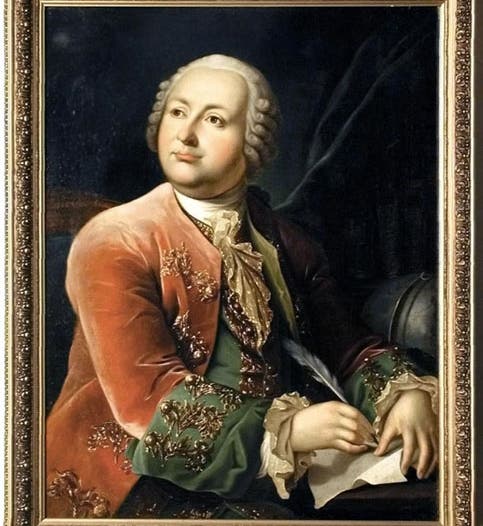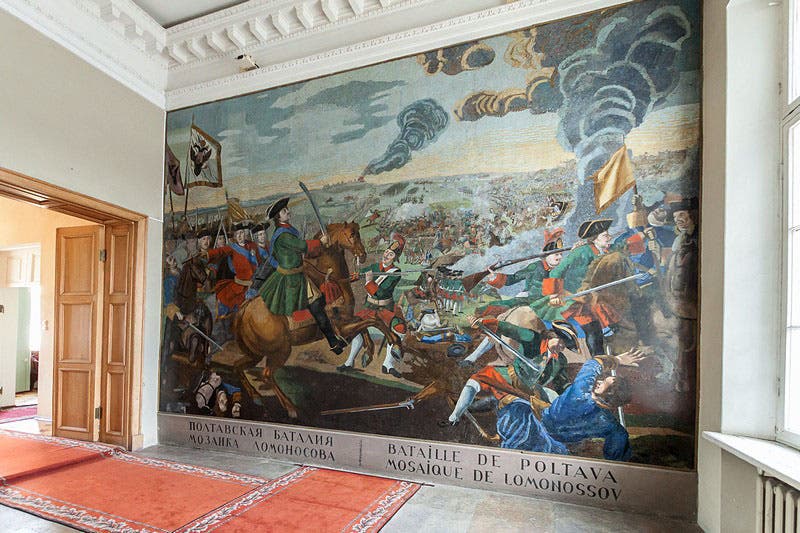Scientist of the Day - Mikhail Lomonosov
Mikhail Vasilyevich Lomonosov, a Russian scientist, was born Nov. 19, 1711. Lomonosov was the first native Russian to be appointed to the Academy of Sciences in St. Petersburg in 1742 (all previous members had been imported luminaries from Germany, France, or Switzerland). He is best known for his observations of the transit of Venus. Edmond Halley had earlier called for a world-wide program to observe the next passage of Venus across the Sun in 1761, hoping it would yield an accurate distance from the Earth to the Sun. Hundreds of astronomers from dozens of countries participated in an international Venus-watch in 1761, and among all those observers, Lomonosov was the only one who realized that the small nimbus that surrounds Venus as it enters and departs the Sun’s disc is an indication that Venus has an atmosphere. When, 30 years later, William Herschel and Johann Schröter announced their discovery of a Venusian atmosphere, they were completely unaware that Lomonosov had anticipated them.
Lomonosov also did important work in electricity and chemistry (he formulated the law of the conservation of matter in chemical reactions long before Lavoisier did). He wrote poetry and history, and he even founded a glass factory to make colored elements for mosaics, and was inspired to design his own mosaics to celebrate the feats of Peter the Great. One of these is on display in the Russian Academy of Sciences in St Petersburg.
Lomonosov was unappreciated even in his own country for fifty years after his death. But he was rehabilitated in the 19th century and is now widely regarded as one of the great Russian polymaths. In a recent study to determine the most frequently cited Russian scientist ever, Lomonosov was a clear winner, beating out the likes of Dmitrii Mendeleev (inventor of the periodic table) and Ivan Pavlov (discoverer of the conditioned reflex). His wide recognition in Russia comes as a surprise to Westerners, most of whom to this day have never heard of Lomonosov.
There is a handsome statue of Lomonosov in St Petersburg (third image), and another standing before Lomonosov Moscow State University, which Lomonosiv co-founded in 1755 (fourth image). There is also a room devoted to him at the Kunstkamera (Museum) next to the St Petersburg Academy of Sciences. The painting that you see there (first image) is the only surviving portrait of Lomonosov made during his lifetime. On the Kunstkamera website, they say this is a copy of the original; it is not clear where the original painting is now.
Dr. William B. Ashworth, Jr., Consultant for the History of Science, Linda Hall Library and Associate Professor, Department of History, University of Missouri-Kansas City. Comments or corrections are welcome; please direct to ashworthw@umkc.edu.









